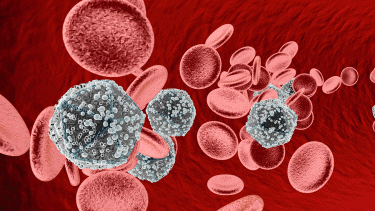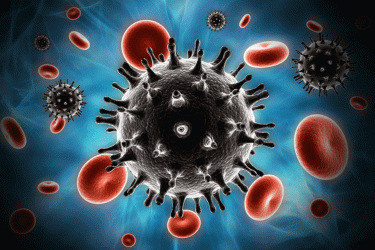Showcasing a monthly injectable HIV treatment
Posted: 16 September 2019 | Victoria Rees (European Pharmaceutical Review) | 4 comments
Janssen’s Brian Woodfall discusses the pharmaceutical company’s research process for their monthly injectable HIV treatment and their predictions for the future of the condition.


HIV can be a debilitating and life-altering disease; with the potential to be fatal, it is vital that pharmaceutical companies develop treatments to combat the condition.
European Pharmaceutical Review’s Victoria Rees spoke with Brian Woodfall, VP, Global Head Development, Infectious Diseases at Janssen Research & Development, who has studied HIV and investigated potential treatments throughout his career. He explained the intricacies of the disease and the complications of finding a cure.
Treating the condition
Woodfall said that in the 1980s, HIV was recognised as “a worldwide epidemic,” which prompted various groups to try to find a solution. These began as therapeutics to alleviate symptoms, but their success rates failed as the virus became resistant to treatments.
Taking tablets every day may also serve as a reminder to patients of their condition”
He remarked that a turning point came in the 1990s, with the development of multiple types of antiretrovirals that were used in combination, known as a ‘cocktail’. This method suppressed viral replication so that HIV could not develop resistance. Woodfall explained that scientists could change the consequence of the disease, “which was invariably progressive and associated with severe outcomes related to immunosuppression, into a chronic manageable illness.”
Despite this, some patients found the early drugs difficult to tolerate, especially when multiple pills had to be taken several times a day. This meant that therapeutic research had to focus on improving the safety and tolerability of HIV drugs, explained Woodfall.
A significant progression came when multiple pills were combined to just one tablet per day, which is still the standard current treatment.
The complexities of HIV
Woodfall explained that there are three main reasons why HIV is a potentially difficult condition to treat:
- HIV attacks immune system cells, so there is no natural defence that the body can use against foreign pathogens. This means that other infections and cancers can invade the body and treatments cannot make use of the immune system.
- HIV can integrate into human DNA, meaning that once the viral genomic sequence is inserted into the human genome in the cell, the virus cannot be cleared. This also means that HIV can reproduce. Therefore, clearing or killing the cells that contain the viral DNA is the only way to eradicate the infection.
- The virus replicates at a very high rate, increasing the likelihood of mutations occurring, which can cause resistance to treatment. Therefore, unless there is complete viral suppression by a strong combination of antiretrovirals, HIV may become drug resistant.
It is crucial that researchers take these factors into account when designing treatments for HIV, to ensure effectiveness and to prevent the condition from becoming resistant.
A novel injectable maintenance treatment


He explained that during the research and development stage of the injection, the team investigated individual medications from within their portfolio and worked with other pharmaceutical companies researching HIV to develop combination antiretrovirals.
This collaborative approach allowed the researchers to identify a drug that would be long acting as an intramuscular injection. Partnering with ViiV, who had a similar drug from a different class, enabled development of the first long-acting therapy regimen.
Woodfall explained that the combination of these two antiretrovirals has been shown in Phase III studies “to be just as effective as daily oral therapy.” Applications to other regulatory bodies around the world are being planned by the companies.1
The advantages of the monthly injection mean that patients who have chaotic life situations, mental illness, or fear of stigmatisation, would not have to worry about taking a daily pill, commented Woodfall. Taking tablets every day may also serve as a reminder to patients of their condition, whereas a monthly injection greatly reduces this, highlighting the advantages of the long-acting injectable regimen.
New formulations
…the team investigated individual medications from within their portfolio and worked with other pharmaceutical companies researching HIV to develop combination antiretrovirals”
During the development stage, Janssen and ViiV used their molecules in a new combination. The companies developed the rilpivrine and cabotegravir molecules separately, remarked Woodfall, and were subsequently combined.
Woodfall explained that the rilpivirine molecule was chosen for its potency. It “only needs to be administered at a very low daily dose when used as an oral medication,” which is why the researchers chose to develop it into a long-acting injectable.
The same technology that the company applied to previous schizophrenia drugs was used to ensure the molecule would be long acting. Using this formulation, the company was able to create the monthly injection.
Challenges of HIV R&D
Woodfall highlighted that the standard treatment for HIV, until very recently, has been to use a three-drug approach. More recently, we have seen the development of a two-drug technique combined into a single daily pill. However, demonstrating whether a long-acting injectable would be “just as effective with the limited interval injections as oral therapy,” was a major hurdle, said Woodfall, but identifying the right molecules resolved this.


He says that the team are “very happy to have reached this important milestone and are on the cusp of being able to provide this treatment option to patients and their providers.”
The future of HIV treatments
Although single-tablet options are still being researched, Woodfall predicts that these will evolve into long-acting therapies. He emphasised that “pharmaceutical companies, academic institutions and other stakeholders in the industry are very much interested in an HIV cure for those individuals who are infected.”
Two types of treatment may be seen in the future, explained Woodfall; one could be a functional cure where “the viral DNA continues to remain in long-lived or dormant cells in the body, but patients could potentially reach a stage where they wouldn’t need to receive ongoing therapy.” The other treatment option would be to eradicate the virus from the body completely, but he says that this is a “very ambitious goal.”
Preventing infection is another kind of treatment option that needs investigating, according to Woodfall. He explained that the past few years have seen some advances and successes in this area, including “prep” – pre-exposure prophylaxis using oral antiretrovirals.
However, he emphasised that one of the key preventative strategies for the future would be the development of a vaccine.
Developments in the pipeline
The current R&D climate for HIV treatments is promising. Since the interview, Janssen have announced that their long-acting injectable has met its primary endpoints in a Phase III trial.2


Other developments are being investigated as well. Woodfall divulged that at Janssen, a two-month injection is being trialled and data should be available by the end of the year.
“We think that the longer the interval [between treatment administration], the more attractive that option will be to patients,” Woodfall commented.
In addition to the long-acting therapy, Janssen are also developing an HIV preventative vaccine. Enrolment in the company’s Phase II Imbokodo trial is now complete, which will investigate the treatment in high-risk women in Africa.3,4 A Phase III Mosaico trial for a preventative vaccine is also currently being set up in Europe, North America and South America.5
“We’re very optimistic based on early evidence in animal models, as well as early human studies, that all suggest we should be able to get high levels of immunogenicity to provide protection,” he said. However, successful Phase II and Phase III trials are where we will examine the safety and efficacy of the vaccine.
Woodfall concluded: “We continue to work hard to provide better treatment options for patients living with HIV,” adding that they are working towards better preventative methods for people globally.
References
- Janssen Submits Regulatory Application to European Medicines Agency for Rilpivirine Long Acting, to Be Used in Combination with Cabotegravir Long Acting, as the First Monthly Injectable Treatment for HIV [Internet]. Businesswire.com. 2019 [cited 21 August 2019]. Available from: https://www.businesswire.com/news/home/20190728005049/en/Janssen-Submits-Regulatory-Application-European-Medicines-Agency
- Janssen Reports Positive Topline Results for ATLAS Phase III Study of a Novel, Long Acting Injectable Two-Drug Regimen for the Treatment of HIV-1 [Internet]. Janssen. 2019 [cited 11 September 2019]. Available from: https://www.janssen.com/janssen-reports-positive-topline-results-atlas-phase-iii-study-novel-long-acting-injectable-two-drug
- About [Internet]. Imbokodo. 2019 [cited 21 August 2019]. Available from: https://www.imbokodo.org.za/about
- Johnson & Johnson and Partners Announce First Efficacy Study for Investigational Mosaic HIV-1 Preventive Vaccine [Internet]. Janssen. 2019 [cited 21 August 2019]. Available from: https://www.janssen.com/johnson-johnson-and-partners-announce-first-efficacy-study-investigational-mosaic-hiv-1-preventive
- Frei D. The Quest for a Global Preventive HIV Vaccine Reaches an Exciting Milestone With the Mosaico Study [Internet]. Content Lab – U.S. 2019 [cited 11 September 2019]. Available from: https://www.jnj.com/latest-news/the-quest-for-a-global-preventive-hiv-vaccine-reaches-a-new-milestone
Related topics
Clinical Development, Clinical Trials, Drug Development, Formulation, Research & Development (R&D), Vaccines










It’s a great news the vaccine injection for the HIV. Keep up the good work!!
Firstly thanks to u nd ur whole team for thinking of patients who r suffering from this desease nd congrats
Best pharmaceutical information/development update
No doubt, finding permanent HIV cure is very ambitious goal. But, we can not forget that-
1. Already three decades have been passed in search of permanent cure
2. None other disease than HIV is highly paid/donated by funding organization
3. Technological advancements such as cryo electron microscopy, genome editing tools like ZFN, TALEN, CRISPR,CAR-T cell therapy etc are available now to attain the target in due course of time.
4. Last but not least the HIV should not be envisaged as a profit maximization tools
Projected target will be achieved only when the steps are taken in that direction instead of finding alternative treatments options.